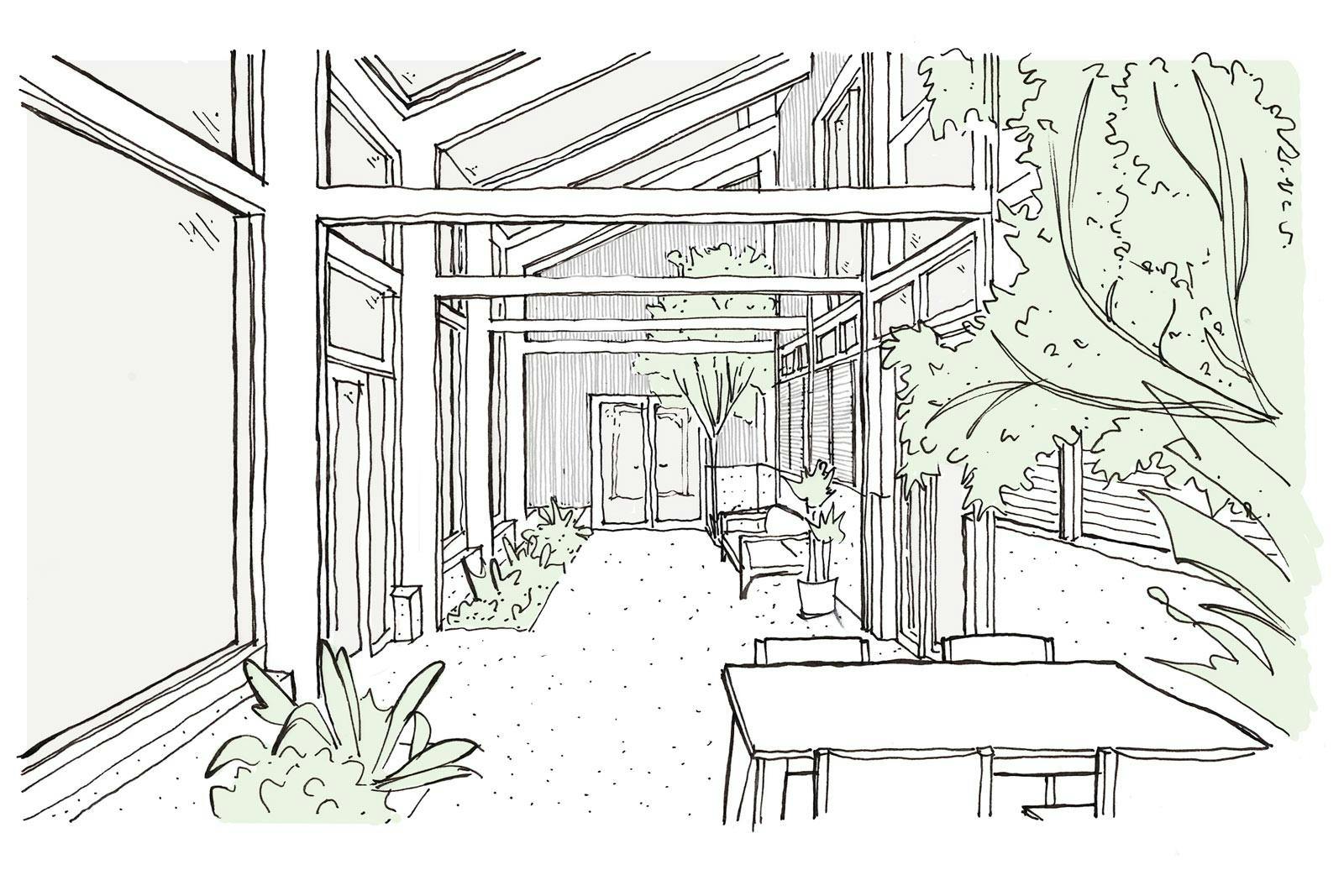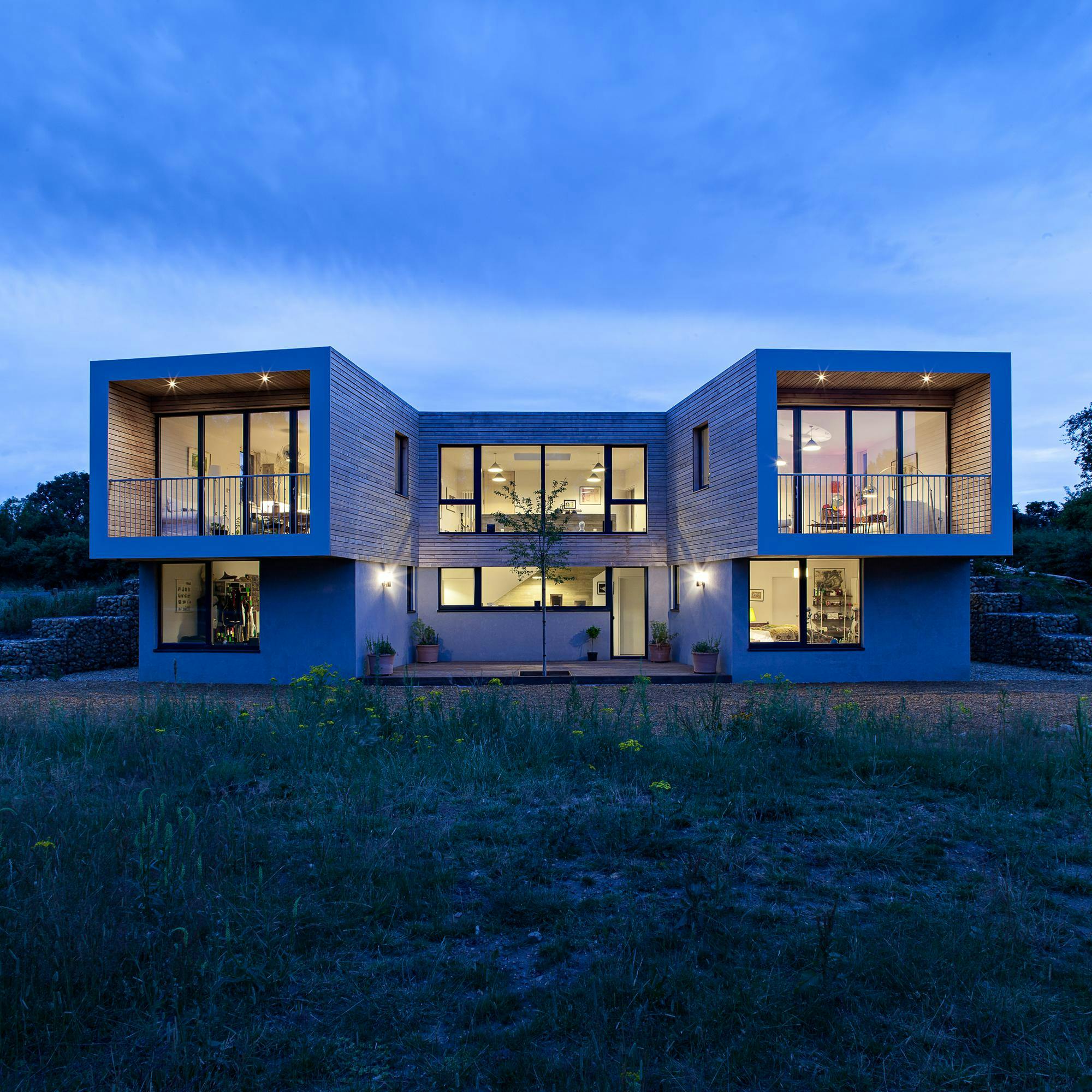ProjectSun House
LocationHampshire
ClientPrivate
StatusPlanning DRP
Harnessing the sun to provide a net zero carbon home
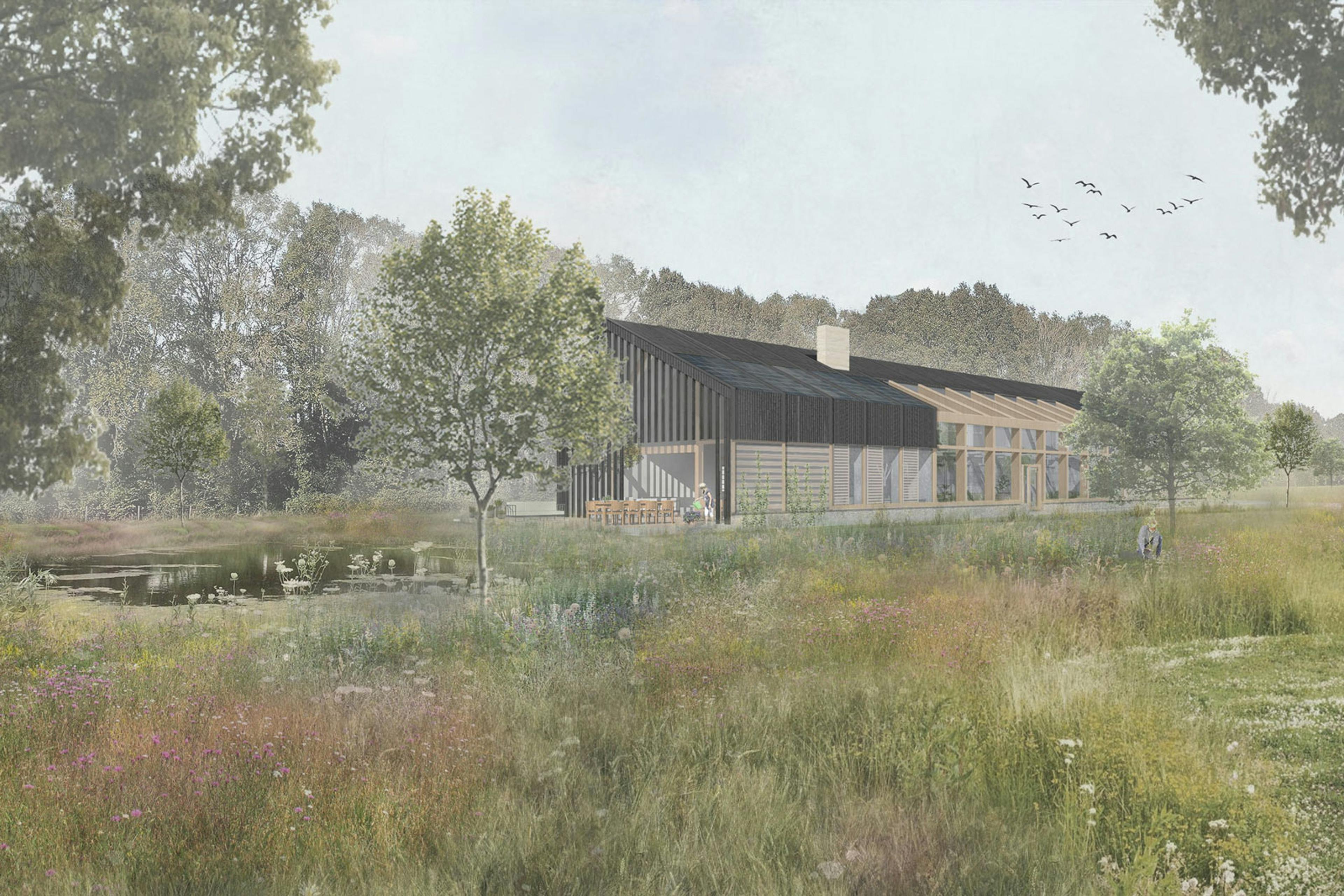
A new model in climate resilient architecture looks at ways we can harness the sun, resulting in a temperate and comfortable home with abundant light-filled living space.
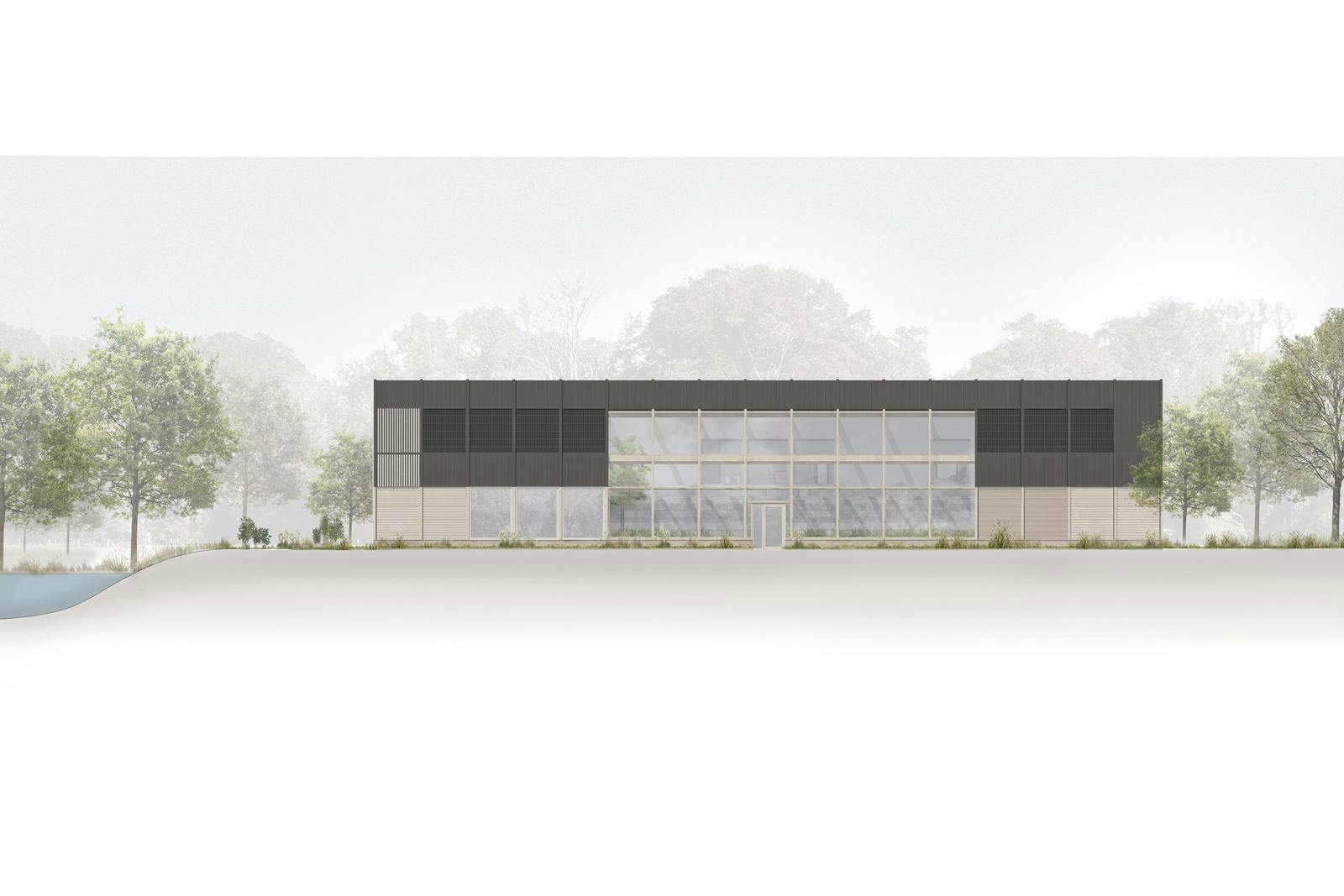
Sun House is a Paragraph 84 (previously Paragraph 80) home which innovates solar house history and principles to provide a lifetime net zero carbon home. It is proposed that the house is a new prototype for climate resilient architecture; a home which builds upon the principles of the Grade II listed home the clients currently live in, but incorporating modern technologies to ensure light, bright connected spaces which have both low embodied and operational carbon demands.
A winter garden and rammed chalk thermal mass wall act as a primary driver in the solar house approach. A dark, stained, timber cladding datum externally acts as an accentuated roofscape, revealing a light, airy and healthy space inside, with exposed timber structures both internally and externally.
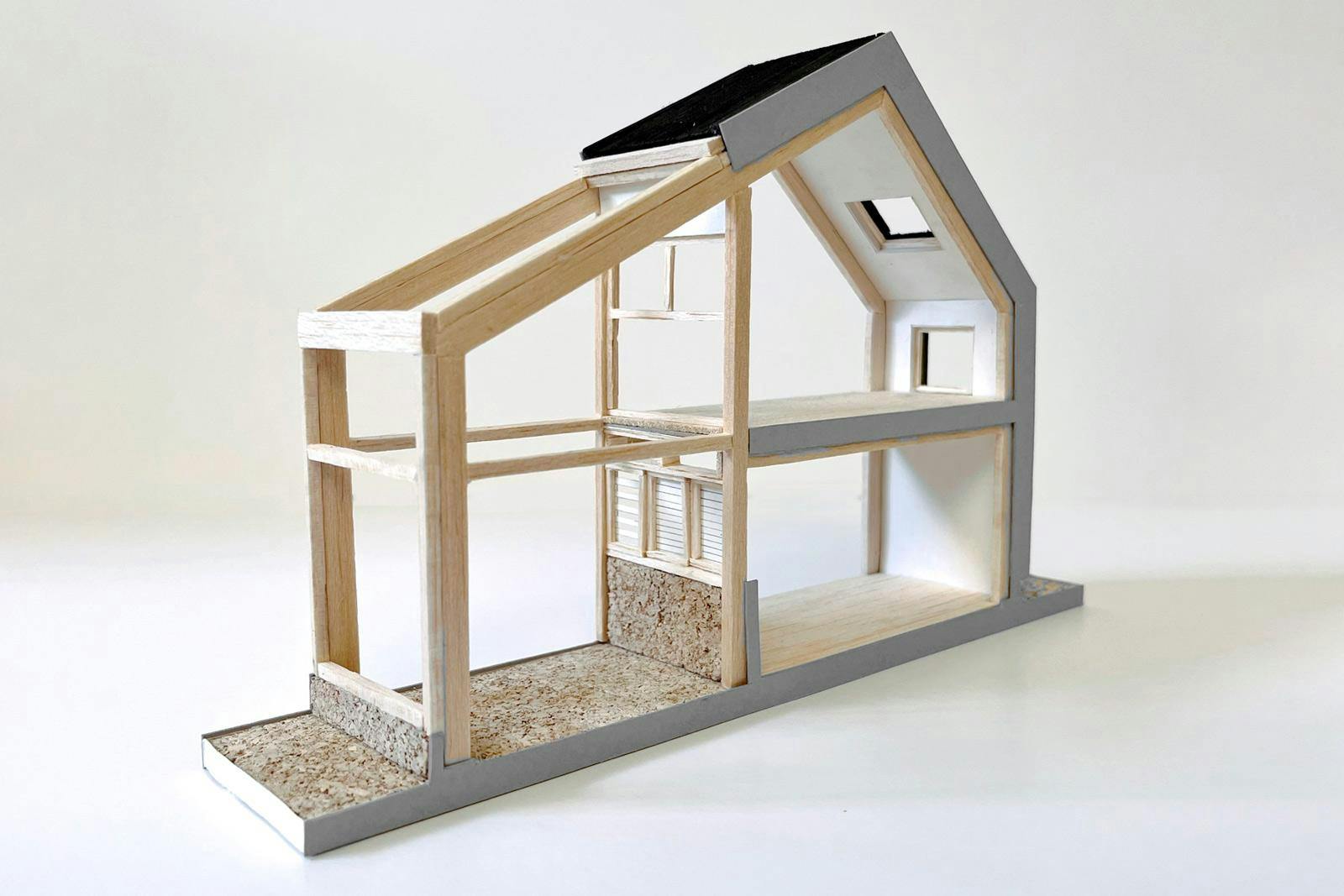
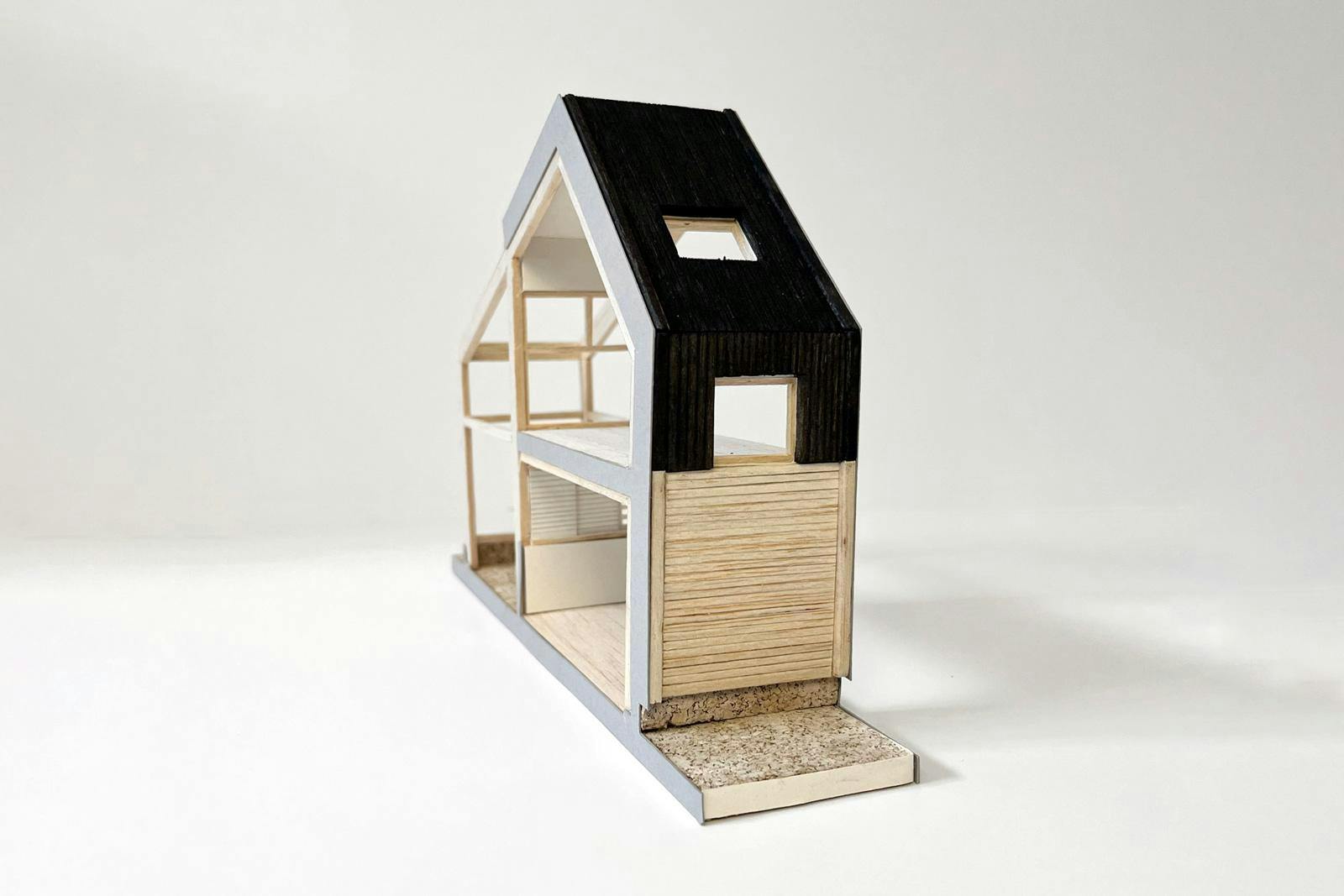
Climate Resilience: Solar House Principles
A primary factor in climate resilience is solar control. The sun produces enough energy in 90 minutes to power global energy requirements for a whole year. It is the ultimate source of energy for climate resilient buildings. We propose that Sun House uses ‘passive’ design principles and ‘active’ technologies holistically to control and harness the sun’s energy at the correct times. Extensive research into both passive and active solar design features was undertaken, which when combined with computational energy modelling of site and proposal, means features can be included for lowest operational carbon demands.
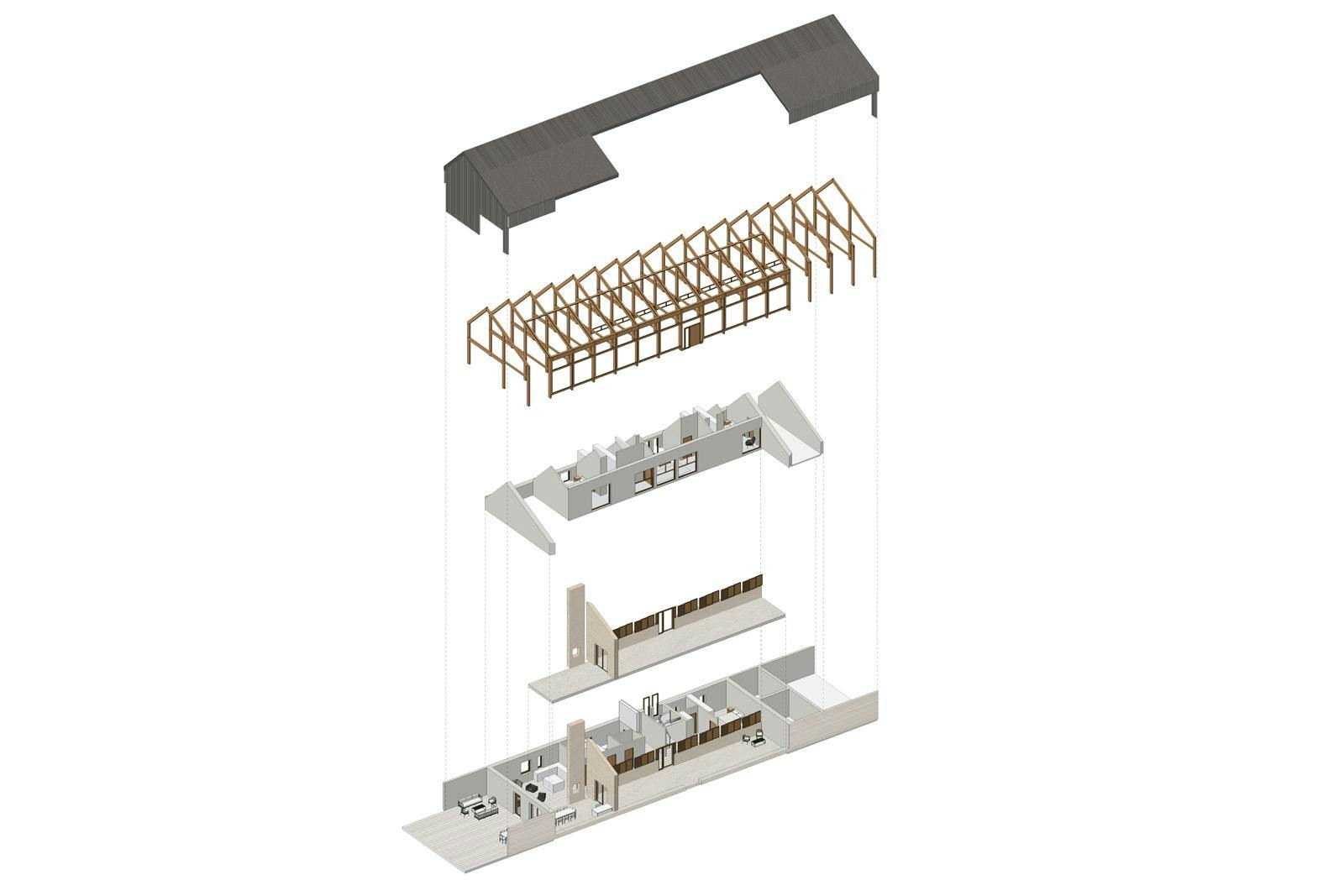
The size of the winter garden and design of the shutters means that in the summer solar gains are controlled to prevent overheating, whilst in equinox and winter the sun will reach further into the plan when the shutters are open, helping regulate internal temperatures. The shutters also ensure the area continues to benefit from dark skies at night.
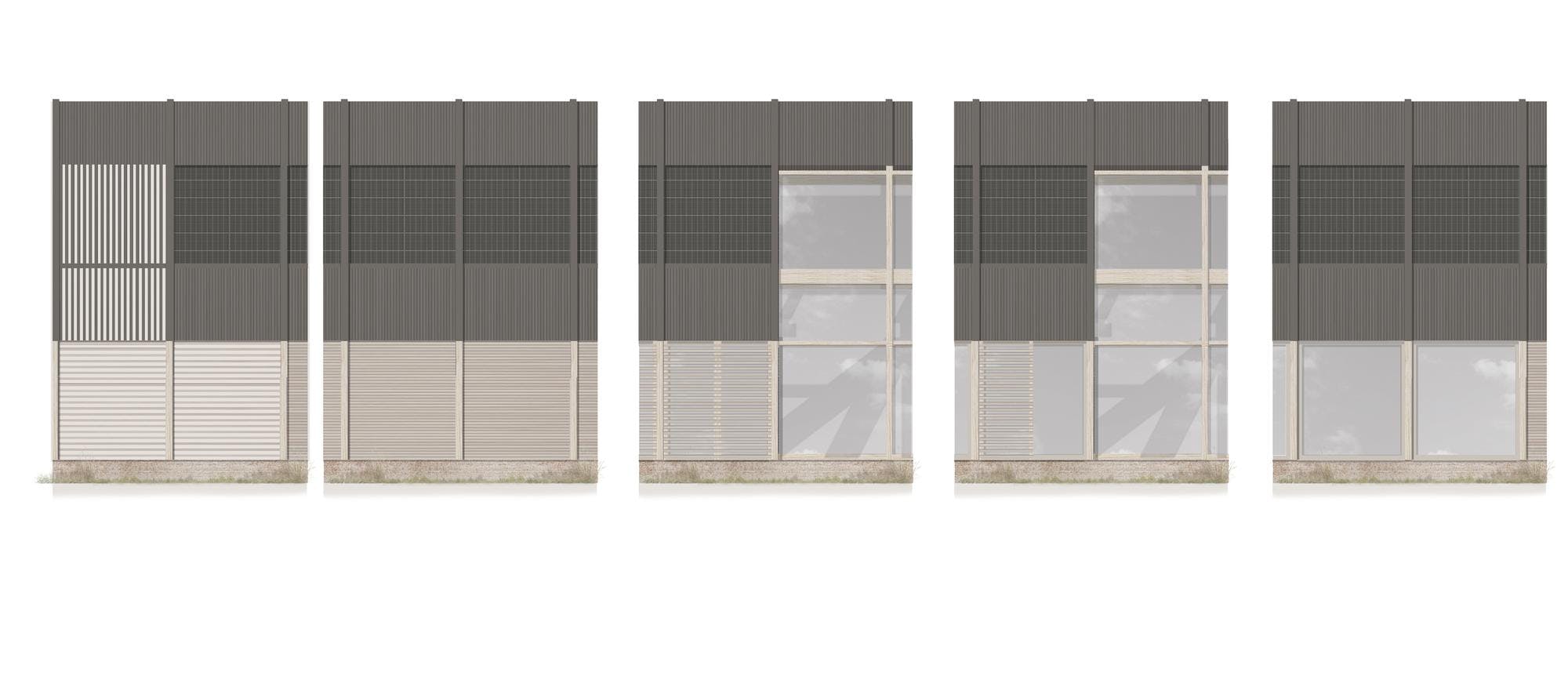
Landscape Design
Working with Studio 31 Landscape Architects, a sensitive landscaping approach for the site has been developed, born from research into the local landscape character. A winding approach to the house is proposed, reflecting local agricultural accesses, along with a rotational sheep grazing proposal to encourage the growth of wildflower planting. Also proposed is a wildlife pond reminiscent of historic farmsteads and a large amount of additional tree planting to build on the already incremental surrounding woodland.
